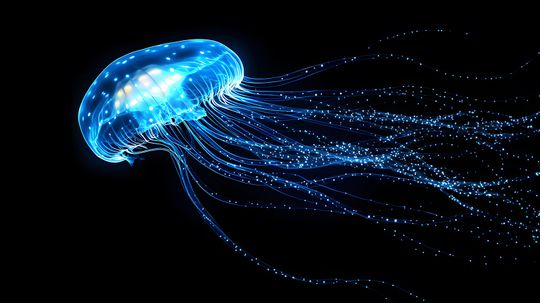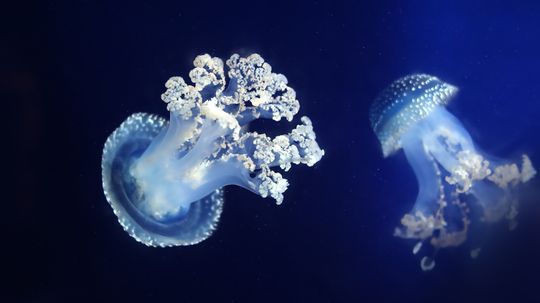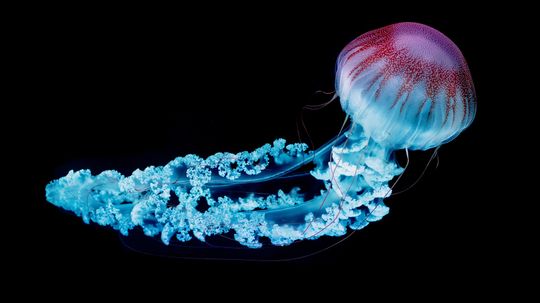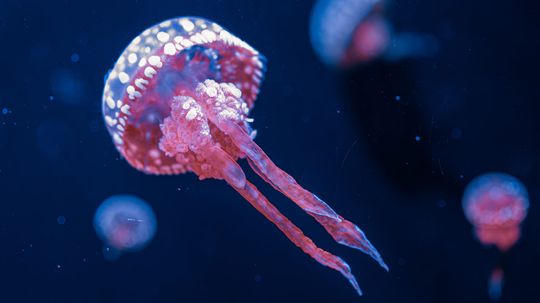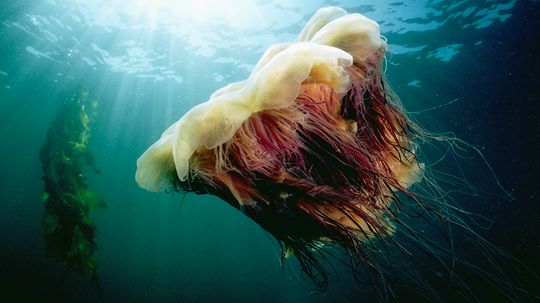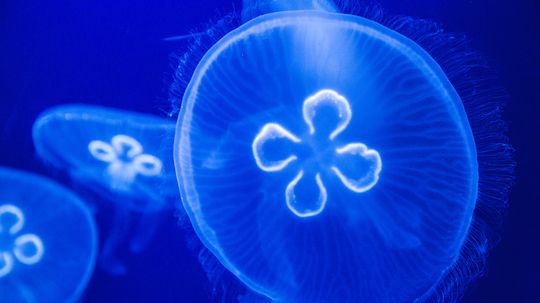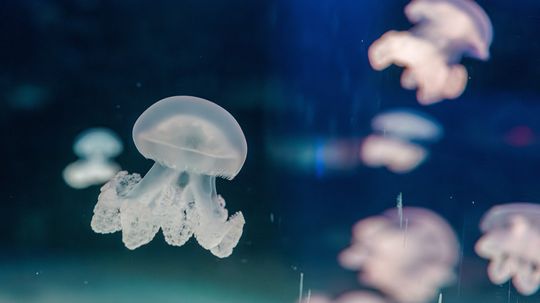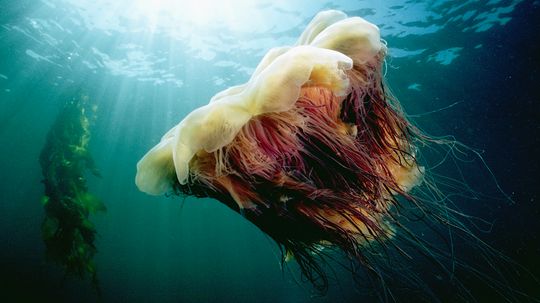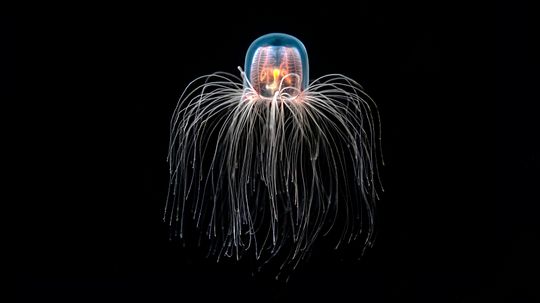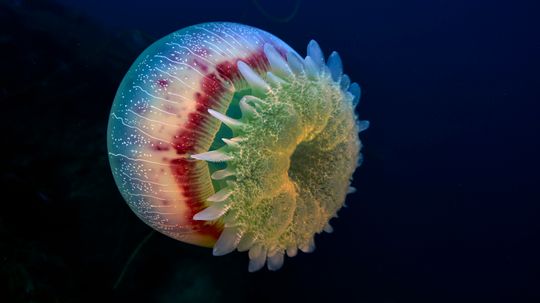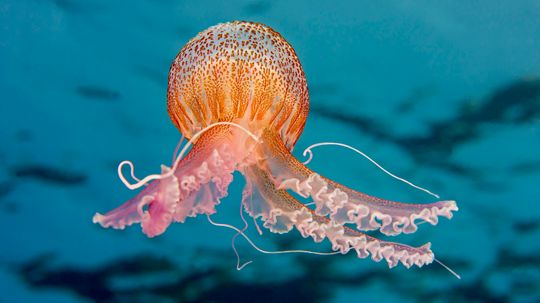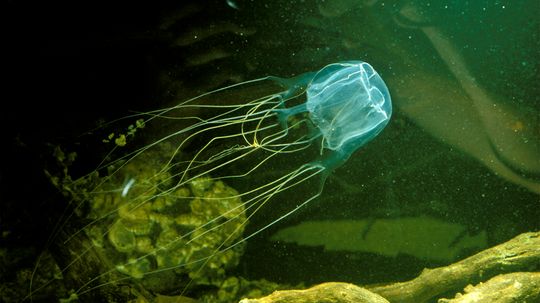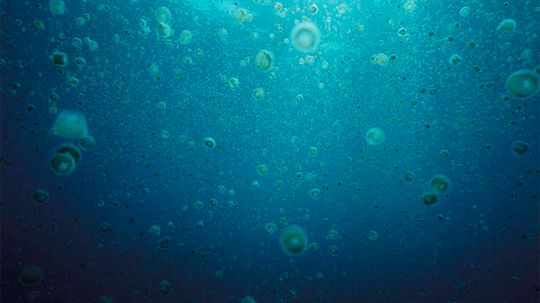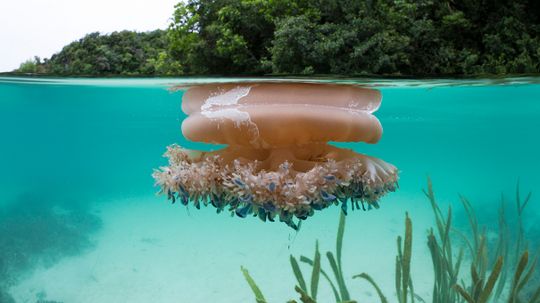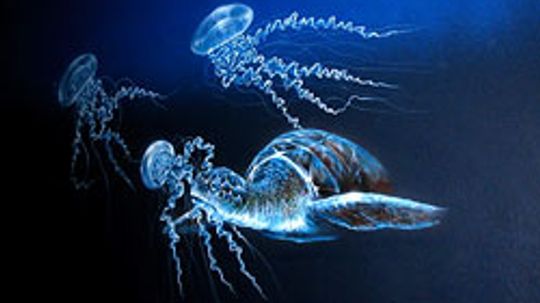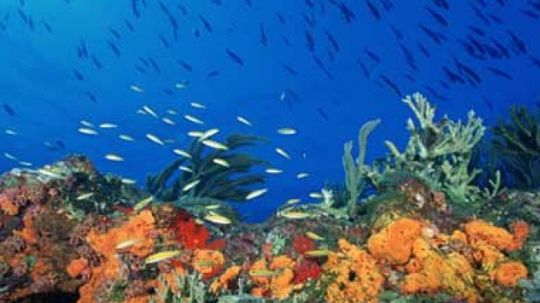Cnidarians
Cnidarians such as jellyfish and corals have stinging cells called nematocysts. When touched they eject barbed threads tipped with poison.
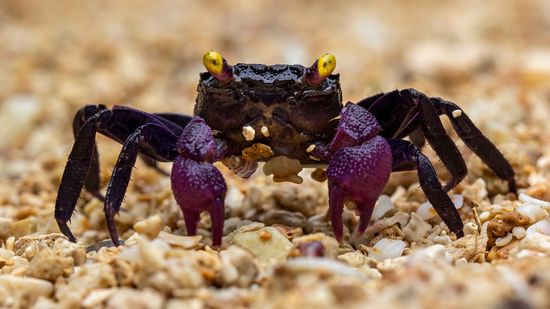
Vampire Crab: More Cartoonish Than Blood-sucking

Snow Crab: A High-protein Delight Thriving in Cold Waters

Dungeness Crab: A Deliciously Sustainable Crustacean
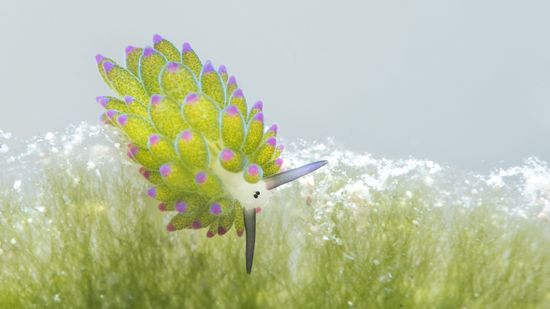
No, the Leaf Sheep Sea Slug Is Not an AI Hallucination
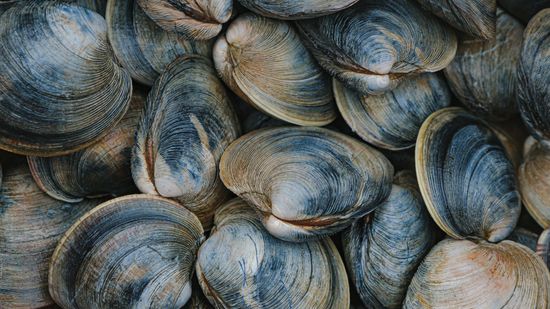
An Ocean Quahog Shows Its Age Like Rings on a Tree
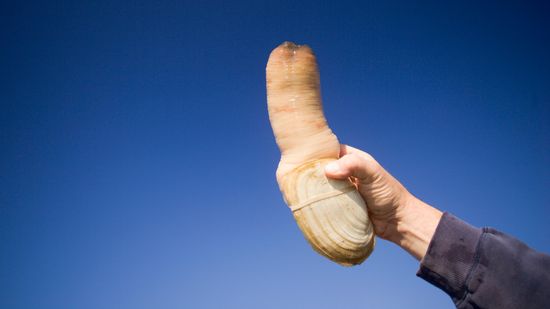
Geoduck Looks NSFW but Is Prized for Its Flavor

Colossal Squid vs. Giant Squid: There's a Massive Difference
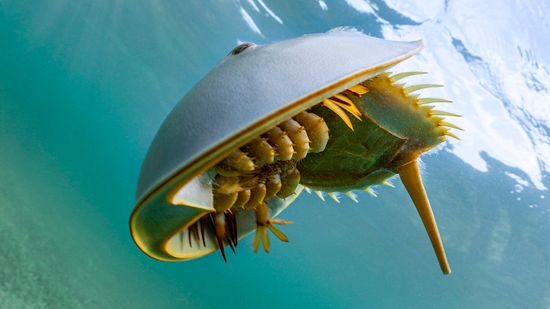
Horseshoe Crab Looks Like an Alien, If We're Being Honest
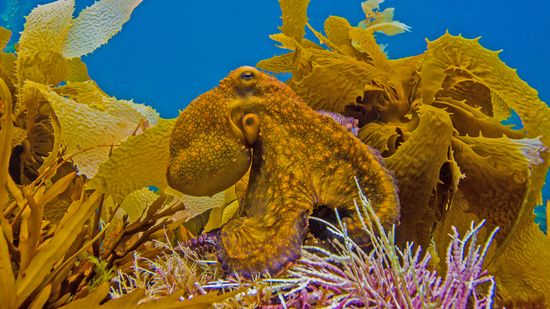
There Are 300 Types of Octopus Species, Some With Internal Shells
Learn More
In the deep ocean where sunlight fades to black, a strange glow pulses through the water.
By Nico Avelle
You’ve probably seen them in aquarium tanks or floating just offshore—those milky, gelatinous blobs with polka dots and long, frilly arms. Meet the white spotted jellyfish (Phyllorhiza punctata), a tropical jellyfish invader that's turning up far from home.
In the deepest, darkest parts of the ocean, far below where visible light can reach, swims one of the strangest animals on Earth: the deep sea jellyfish. These mysterious creatures thrive in a zone so dark and pressurized it's nicknamed the midnight zone.
By Nico Avelle
Advertisement
They have no brains, no bones, and no backstories. Yet somehow, jellyfish are among the ocean's most successful survivors. So, how do jellyfish eat? The answer is all about stings, tentacles, and some very sneaky arms.
By Nico Avelle
With its fiery tentacles and massive bell, the lion's mane jellyfish is one of the ocean's most striking creatures. Known scientifically as Cyanea capillata, this giant jellyfish haunts cold northern waters, including the North Pacific Ocean, North Sea, and Arctic.
By Nico Avelle
If you spot a splash of electric blue drifting along the shoreline, it's probably not a plastic bag. That pulsing blob is likely either a Portuguese man-of-war or a blue jellyfish, one of the most striking marine invertebrates you can find floating near beaches in the Northern Hemisphere (primarily in the North Atlantic region).
By Nico Avelle
Freshwater jellyfish may sound like an oxymoron—because jellyfish live in the ocean, right? Not all of them. Craspedacusta sowerbii, also called the peach blossom jellyfish, thrives in rivers, lakes and even gravel pits.
By Nico Avelle
Advertisement
Moon jellyfish might look like ghostly saucers adrift in the blue, but they're more than just ocean ambiance. These translucent animals, known scientifically as Aurelia aurita, are part of a family of jellies that have lives perfectly tuned to drifting through the sea.
By Nico Avelle
How do jellyfish reproduce? That depends on which jellyfish you mean.
By Nico Avelle
There are about 200 documented species of jellyfish pulsing their way through the world's waters. Most range from the size of your belly button to the size of a car tire.
The immortal jellyfish, known as Turritopsis dohrnii, has the ability to reverse age and theoretically live an eternal life. Because of its ability to regrow its cells, it could theoretically escape death over and over again.
By Ada Tseng
Advertisement
While swarm of jellies may look serene, you're best off keeping your distance. A sting from the most dangerous jellyfish on Earth can be deadly. Even when we're not looking at the most dangerous, many jellyfish species have venomous stings that can cause everything from mild discomfort to serious pain.
By Talon Homer
The life cycle of jellyfish can seem almost otherworldly. Some species are the closer to actual immortality than anything else we see in the animal kingdom!
By Mack Hayden
Most jellyfish are more bothersome than threatening, but the box jellyfish is so poisonous you might not make it out of the water alive.
Sea lice aren't actually lice - they're jellyfish - but they're no fun when they get in your bathing suit.
Advertisement
Don't think you have much in common with a jellyfish? What researchers just discovered may surprise you.
You're going on vacation to a place where jelly fish stings are a common occurrence and you want to know how to treat a jellyfish sting. This article will tell you how to treat a jellyfish sting.
As you observe jellyfish twirl underwater, it's difficult not to be mesmerized by their graceful movements. But if their tentacles touch your skin, you'll regret being anywhere near these gelatinous blobs.
How do coral polyps mere millimeters in length form the world's largest living structures? Will these giants of the sea last much longer if the present rate of destruction continues?
Advertisement
Although jellyfish have been around for over 650 million years, they're still very mysterious. Learn the all about the fascinating jellyfish life cycle.
